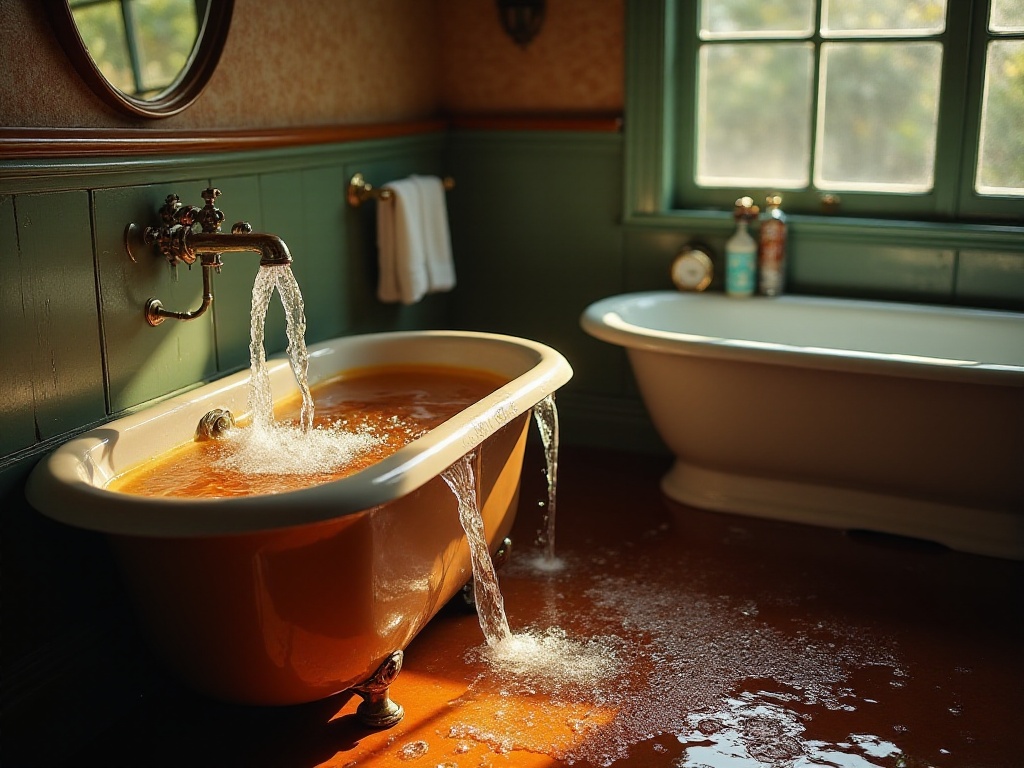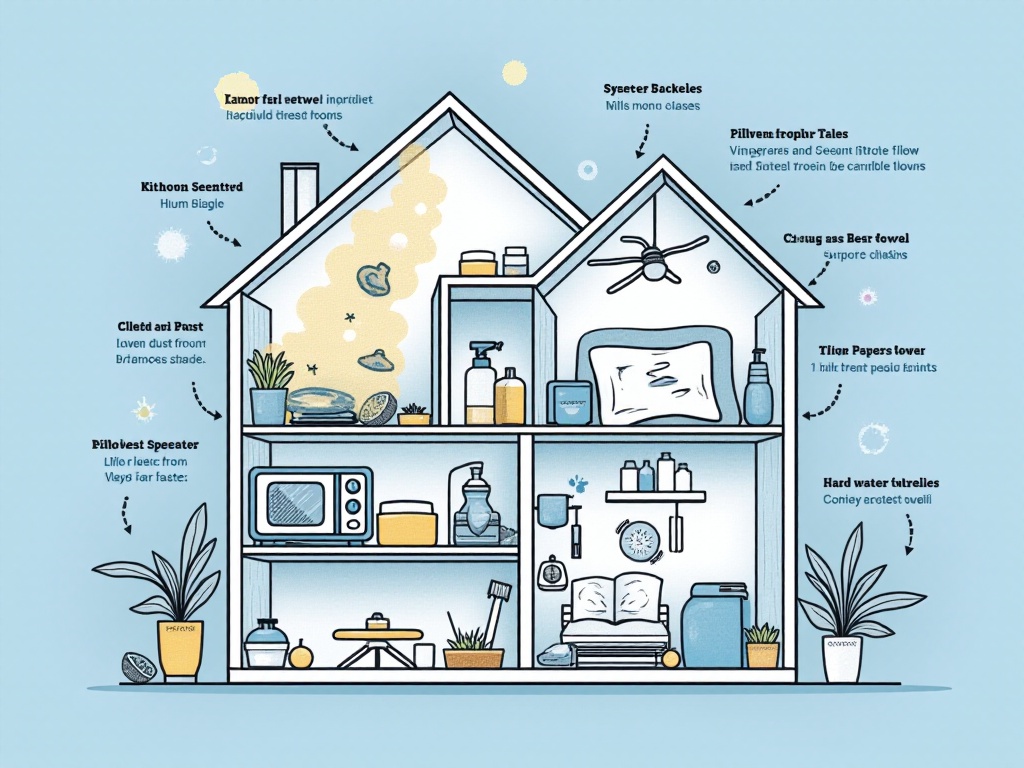Opening Thoughts
Every time I see the mess in my kitchen, I just want to run away! The greasy stove, sink full of dishes, and oily countertops everywhere are simply overwhelming. As a young professional who just moved out, I've struggled plenty with kitchen cleaning. After countless trials and failures, I've finally compiled a set of super practical cleaning tips. These methods are all tried and tested, using items readily available at home without spending big money on various cleaners.
Appliance Care
To be honest, when I first started living independently, I knew nothing about cleaning these appliances. Looking at the spotted grease stains in the microwave, I thought I'd never get it clean. Until I discovered the magical "lemon steam method": cut half a lemon, put it in a bowl with half a cup of water, and microwave for two minutes. The hot lemon steam softens stubborn grease, while the lemon fragrance eliminates various odors. Once the steam dissipates, a gentle wipe makes the grease melt like snow. The first time I tried this method, I was amazed!
Cleaning the refrigerator is even more strategic. I now set aside time every weekend to organize the fridge, taking everything out, throwing away what needs to be discarded, and consuming what needs to be eaten soon. Using warm water with a bit of mild detergent, I wipe the interior until it shines. The fridge door seal deserves special attention, as dirt easily accumulates in those folded gaps. I use an old toothbrush dipped in baking soda water to carefully clean every crevice. It seemed tedious at first, but seeing the renewed fridge brings such a sense of achievement! Plus, a clean fridge no longer has that mixed food odor.
Cleaning the oven was originally my nightmare, as I was too lazy to clean it after each use, resulting in increasingly stubborn grease that drove me crazy. Later I discovered a super useful method: place a large foil tray at the bottom of the oven, so oil drips collect on the foil, which can simply be replaced after use. For accumulated grease, I use a mixture of baking soda and vinegar. First preheat the oven to about 50 degrees, then turn it off, sprinkle baking soda on the bottom, and spray white vinegar. The foam produced by the reaction between baking soda and vinegar softens the grease. After waiting ten minutes, wipe with a damp cloth, and even the most stubborn black stains can be easily removed.
The rice cooker is also a commonly used kitchen appliance, and while many might think it doesn't need special cleaning, both the inner pot and lid require regular deep cleaning. My method is: pour appropriate amount of water into the inner pot, add a few lemon slices, then boil. This not only removes odors but also softens rice residue stuck to the pot. For limescale on the rice cooker lid, I soak it in vinegar water for 15 minutes, then gently scrub with a soft brush.

Kitchenware Revolution
The cutting board is one of the most frequently used items in the kitchen, and improper cleaning can lead to bacterial growth and unpleasant odors. I now use the "lemon disinfection method": after each use, first rinse with hot water, then sprinkle salt, and repeatedly rub with half a lemon against the salt. The natural acidity of lemon combined with salt's abrasive action effectively removes bacteria and odors from the board's surface. After treatment, rinse with clean water, and make sure to dry it standing up, never flat, to prevent mold.
For wooden cutting boards, I also do regular "maintenance care": gently wipe the board's surface with cooking oil to prevent wood cracking and extend its lifespan. Note that only a thin layer of oil is needed, and excess oil should be absorbed with kitchen paper.
Cleaning the sink and faucet is a skilled task. My stainless steel sink often gets water marks and scale, especially around the faucet. Now I use the "vinegar descaling method": pour white vinegar on kitchen paper, wrap it around the faucet, and leave for 15 minutes. The acidity of vinegar softens the scale, which can then be easily brushed off with a toothbrush. For the sink itself, I first clean with dish soap, then sprinkle baking soda powder, and spray white vinegar. After the foam subsides, wipe with a sponge and rinse thoroughly with clean water.
Wok maintenance is also important. Like many people, I initially didn't know how to care for an iron wok, resulting in constant rusting at the bottom. Later I learned the "wok care method": after each use, dry the wok while it's still hot using kitchen paper, then pour in a little oil and spread it evenly on the inner walls with kitchen paper. This not only prevents rust but also helps form a natural non-stick coating.
Knife care also has its techniques. After cutting vegetables, I immediately rinse with hot water and dry with a towel. Pay special attention to the gaps in the handle and back of the blade, where dirt easily accumulates. I regularly wipe the blade with cooking oil to prevent rust.

Counter Revolution
Maintaining stainless steel countertops indeed requires some skill. My go-to method now is the "olive oil care method": first clean the surface with cleaner, then pour a little olive oil on a soft cloth and wipe along the grain of the stainless steel. This not only makes the surface shine but also forms a protective film against water marks and fingerprints. Note that only a thin layer of oil is needed; too much will make it feel greasy.
Marble countertops require even more careful cleaning. I once dulled the surface by using too strong a cleaner. Now I use mild soapy water for wiping, then immediately dry with a cloth. For stubborn stains, I make a paste with baking soda and water, gently apply it to the stain, wait a few minutes, then wipe off.
While ceramic tile countertops are relatively easy to clean, the grout lines are the most difficult to clean. My secret is using a toothbrush dipped in baking soda water to carefully scrub the grout. For particularly stubborn dirt, I soak it in vinegar water before scrubbing, which works especially well.
Cleaning baking sheets used to be my nightmare, as I was too lazy to deal with them after use, resulting in increasingly stubborn grease that drove me crazy. Now I use the "baking soda and vinegar" method: first sprinkle a layer of baking soda on the baking sheet, then spray white vinegar. After a few minutes, the baking soda and vinegar react, producing foam that softens the grease. Then wipe with a sponge, and even the most stubborn black stains can be easily removed.
Stove cleaning is also important. I now immediately deal with oil splashes after cooking, wiping with a damp cloth containing cleaner. For dried grease, I soften it with hot water before cleaning. The cast iron stove grates also need regular cleaning; I clean them with a mixture of baking soda and vinegar, then dry and apply a thin layer of cooking oil to prevent rust.

Daily Maintenance
Honestly, the key to keeping a kitchen clean is developing good habits. I now clean as I cook, immediately returning used seasonings to their places and sweeping vegetable scraps into the trash bin right away. This not only keeps the kitchen consistently clean but also improves cooking efficiency.
Oil splashes during cooking must be cleaned while hot; they're much harder to clean once dried. I keep a dedicated cloth near the stove to deal with oil splashes immediately.
Weekly deep cleaning is essential. I clean in order of "top to bottom, inside to out": first cupboards and walls, then countertops and stoves, finally the floor. This cleaning order ensures already cleaned areas don't get dirty again.
Range hood cleaning is also important. I remove the filter monthly, soak it in hot water with dish soap, then clean with a soft brush. The hood surface is wiped with a damp cloth, paying special attention to dusty corners.
Organizing seasonings and utensils is key to maintaining kitchen cleanliness. I categorize different types of seasonings, placing frequently used ones in easily accessible locations. Utensils are also arranged by frequency of use, making everything neat and convenient.
Waste sorting is an important part of daily maintenance. I keep two trash bins next to the sink, one specifically for kitchen waste, another for other garbage. I take out the trash every evening, keeping the kitchen clean and odor-free.

Closing Thoughts
Through these methods, my kitchen has finally transformed from a "garbage dump" into a clean and tidy cooking paradise. Honestly, implementing these cleaning plans was a bit troublesome at first, but after persisting for a while, it becomes a natural habit. Seeing the renewed kitchen, that sense of achievement is truly irreplaceable!
Cleaning the kitchen isn't a one-time thing; persistence is key. Through these small tips, I believe you can also transform your kitchen into a clean and comfortable cooking space. Remember, details determine success, and the improvement of life quality lies in these seemingly small but important daily habits.
Do you have any unique cleaning tricks? Feel free to tell me in the comments. I'll continue sharing more practical household tips as we create cozy living spaces together. After all, home is our life's harbor, worth our careful attention.
Related articles




